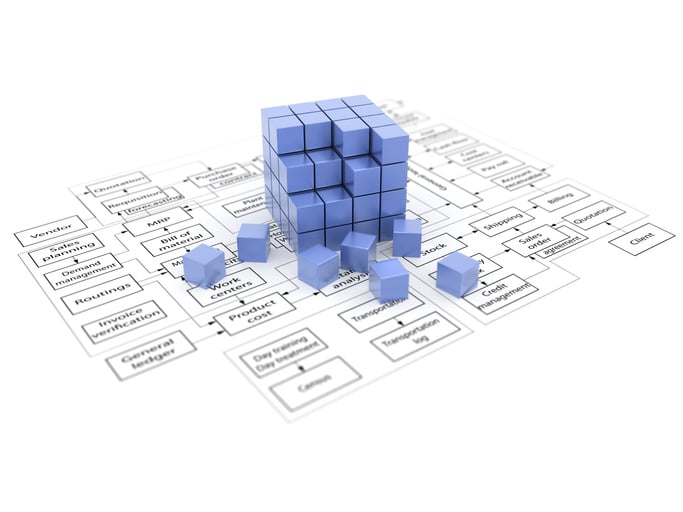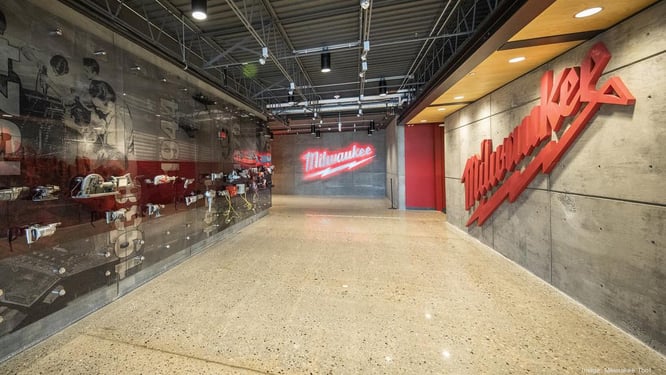Essential Strategies for Balancing Work and Life in Construction
Editorial Note: This article was brought to you courtesy of Rose Morrison, managing editor of ...

Finding talent in the construction industry, particularly among skilled/craft workers, has been a serious challenge in recent years. We’ve reported a few times on this subject (see: Construction News Roundup February 2022, Construction Trends 2022). What’s worse, recent reports show the problem is persistent.
We’ve also previously written about how to be competitive for jobseekers amid construction industry labor shortages, citing, among the top 6 ways to attract in-demand skilled trades, a focus on building an attractive company culture (e.g., offering a holistic compensation package, opportunities for career advancement, etc.).
As we commence the new year, we’d like to offer some culture examples construction company owners may want to consider for 2023!
Attracting talent with a company culture is more important now than ever.
As we have previously reported, skilled, craft, and even salaried employees in the construction industry are fewer and farther between:
A 2023 report conducted by the Associated General Contractors of America (AGC) found the problem to be persistent, with 80% of respondents struggling to fill some or all their salaried or hourly craft positions, with only 8% having no difficulty in finding enough workers (AGC via REJournals).
Ken Simonson, the chief economist of AGC, described in his 2023 Construction Hiring and Business Outlook and Survey Comments the outlook as “less favorable than it was in the survey taken a year ago,” clarifying that “contractors are still having trouble filling positions, and this looks to be the number one problem going into 2023.”
He also added that “a majority of firms still think it will be as difficult or even more difficult to fill positions in 2023 […] even though they raised salaries and wages more last year than they had in 2021.”
“The outlook for finding workers,” he explains, “remains very difficult for most firms […] equally so for union and non-union employers.”
He concludes, “In short, contractors are expecting a positive year overall, but certainly one filled with challenges in terms of a slowing economy, continuing supply chain disruptions, and tight labor supply.”
With a tight labor supply, it’s more important than ever to build a culture that will be more attractive to a narrowing talent pool than your competitors’ is.
Let’s explain.
Hiring managers and collaborative teams have often struggled to define, but have understood the importance of, the ambiguous “culture fit” when trying to successfully vet a candidate.
Culture remains a mission-critical piece of defining who your organization is, your team’s north star.
Great Places to Work®, a company that offers many HR services, certifications, and is noteworthy for its reputable lists of “the best” workplaces in various categories, defines corporate culture as “how you do what you do in the workplace […] the sum of your formal and informal systems and behaviors and values, all of which create an experience for your employees and customers.”

The Harvard Business Review, meanwhile, defines it as “the tacit social order of an organization” which “shapes attitudes and behaviors in wide-ranging and durable ways.”
“Cultural norms,” they explain, “define what is encouraged, discouraged, accepted, or rejected within a group,” adding, “When properly aligned with personal values, drives, and needs, culture can unleash tremendous amounts of energy toward a shared purpose and foster an organization’s capacity to thrive.”
We have now defined what a corporate culture is.

Now, why does a corporate culture matter? For starters, culture is not lost on prospective candidates. Prospective hires value culture as important. In fact, 45% of prospective job candidates viewed culture to be “very important” in the application process, a grand total of 88% citing it as “at least of relative importance,” according to a 2018 Jobvite national study.
Worried about razor thin profit margins and possible project cost overruns? 32% of candidates surveyed stated they would be willing to take a 10% pay cut if the company they were looking to join was a good cultural fit, Jobvite found. More interestingly, 15% said they had turned down jobs because they felt the culture of that company was not congruent with the values they held.
Some benefits of defining corporate culture, WeWork notes, include:
We’ve defined what a corporate culture is, and why a corporate culture is important.
Now onto the how. How can a construction company improve through culture and attract candidates through a strong corporate culture?

Here are 10 Construction Company Culture Examples to try in 2023 to improve your how your company is perceived:
Defining your company culture should be an exciting part of owning a company: It’s your company’s opportunity to define who you are, what you value, and how you’ll be perceived by your customers, employees, and prospects.

Built In, for example, describes a number of “organizational cultures,” each with their own priorities, values, etc.
The common deliverables of a “company culture” are:
For example, at Milwaukee Tool, we define our culture with our end-users’ success as our north star and what sets us apart.
We’ve defined our culture to prioritize, for example, an “obsessed” focus on our end users and delivering them the solutions they need through:
While it may seem straightforward to define a corporate mission and value statement in theory, it can often be a very challenging process. Consultancies do exist that can help get to know key stakeholders, form an understanding of the company, and collaboratively define a company’s north star.
This may sound self-explanatory and part of the above section, but in fact we’ve found that many employees, at companies who don’t do the best job of first defining and then living up to the so-called corporate cultures they have elected to adopt, find mission statements as not much more than “marketing speak”— some nice, flowery language to adorn a prominent wall in your HR department that end up seeming more like empty words to an employee.
On the other hand, companies who have strong cultures with a commitment to living the culture and embodying it can often be seen from a mile away, easily distinguished from their halfhearted peers.
“Googliness” – the special quality Google looks for in its employees and described in a 2011 blogpost as “a mashup of passion and drive that’s hard to define but easy to spot” has been documented extensively and become part of the internet lexicon when describing what makes a “Googler” a Googler (see: definition 1 for Googler: Noun “A full-time Google corporation employee”). For example, the concept has been covered by Business Insider, and hopefuls being coached on “How to Display ‘Googleyness’ (sic) at a Google Software Engineer Interview,” and even documented in a major motion picture.

Pictured Above: Museum exhibition shows "Noggler" hat given to new Google employees. Image source: WikiCommons
What might your “Googliness” be, and how might you embody it?
For example, at Milwaukee®, we view our culture as paramount. How do we embody it? For one, we use our culture expectations as a critical part of our End of Year (EOY) Reviews, testing employees (and managers) on how well they met these expectations. In the true spirit of our “Never settle, always improving” mentality, we use these assessments as a way to gauge how an employee (and a manager) tracks to these expectations, and what tools the organization can give the individual to be successful—ultimately, we want to empower our employees!
We’ve previously written about the importance of focusing on improving the customer experience in construction projects.

To summarize:
As HubSpot smartly opines, having a “customer orientation approach is useful for several” reasons, including:
How might you extend your culture to your customers?
Kayako, a leading customer service software as a service (SaaS) provider, notes:
What better way to extend your culture and appreciation to your customers than extending a Customer Awards program or sending swag?
Wondering what the efficacy of swag to your customers might be?
Did you know that 8 in 10 people own and use promo products or company swag, or that:
How might you measure success?
One area HubSpot suggests is to focus on is a Net Promoter Score (NPS), which they define as, “a typical benchmark that companies use to measure, evaluate and improve customer loyalty.”
A clear organizational structure from your C-suite down to your apprenticeships and interns gives a throughline from the bottom up. Software tools like Pingboard and Lattice offer an easy way to visualize an org chart.

But outside of the traditional org chart, it’s worth noting the best CEOs meet make it a point to meet with employees. At Milwaukee, it’s part of of an employee’s onboarding process—the ability to meet with our President, who gives new hires insight into the company, our history, and priorities.
As silly as Michael Scott’s Dundie Awards on NBC classic, The Office, may seem, scholarly research has shown it to be a sound practice that both makes employees feel heard and is relatively cost-effective:
It’s appreciated by employees too, with 37% finding it important, according to Great Places to Work®.

But beyond giving your employees a customized trophy, there are simple things you can do to recognize an employee/essential subcontractor. Maybe you could even 3D print them yourself!
Here at Milwaukee Tool, simple things, like acknowledging when a consultant is converted from “contractor” status to “full-time employment (FTE),” go a long way in making our team members feel part of our community—and it’s also just the right thing to do.
Kickoff emails, welcoming a new subcontractor or telling a project manager or superintendent “hey, great job!”— these small actions do not go unnoticed.
As previously reported, construction is the #1 most dangerous occupation across all industries.

Acknowledging common hazards of construction and offering safety awareness and training is a critical part of making your crew feel seen, valued, and frankly managing your own risk and liabilities on any given construction project.
Scholarly publications have noted the “importance of accountability for the survival of social systems” (see: University of Maryland Department of Psychology study) and governance (see: study conducted by Emarald Group Publishing). Forbes has written on the subject (Seven Ways To Create A Culture Of Accountability, How To Create A Workplace Culture Of Accountability).

Example accountability technologies include:
The Harvard Business Review reported that 80% of CEOs recognized empathy as a key to success.

The Center for Creative Leadership offers the following tips for showing more empathetic leadership:
As we’ve previously written, a holistic compensation package can often be more attractive than pure monetary compensation.

Additional perks to offer:
From the Google campus bikes and iconic slide to the Apple’s circular spaceship and Amazon’s spheres (an arboretum nestled in a concrete playground), there are many examples of a “corporate headquarters.”

Pictured Above: Google corporate campus in Mountain View, California offers free bikes for employees to traverse sprawling 25-acre campus. Image Source: WikiCommons
A corporate campus to a construction offers a unique advantage: To display your company culture in building form.
At Milwaukee Tool, our corporate campus offers many signals to highlight the construction trades and help reinforce our company culture serving these industries—for instance, office door hand-pulls resemble drill bits, entrance canopies feature our Sawzall® blade profile, common areas feature exposed HVAC, elevators feature core trades including, for example, exposed plumbing. Our main campus, in Brookfield, features a wall of disruptive innovation, from the earliest Hole Shooter to our early cordless tools, to the launch of the One-Key connectivity platform designed to bring productivity in the building trades by transcending the corded job to the cordless to Internet of Things.

Designing a corporate HQ, big or small, is a fun way to build a testament to your company’s culture.
“Identify the scale of headquarters and shop space you’ll need,” BPlans suggests, adding suggesting to also consult with “other local contractors on properties (such as industrial parks) that may be a good fit for your business.”
“Use your business plan,” they recommend, “to identify your initial and overall personnel needs, so that you can find the appropriate space to get you started and provide opportunities to grow and change as the business grows.”
Eden Workplace, for example, offers “6 Corporate Office Design Ideas from Brands You Know.”
Maybe at your headquarters, you could showcase examples of inventive projects (e.g., mixed-used revitalizations); your organization’s commitment to safety; your use of streamlined building processes/lean construction practices, a sustainable use of BIM and other design tools; etc.
As Ken from AGC notes, 2023 is going to be a year that’s “filled with challenges,” particularly with a “tight labor supply.” A corporate culture is critical to staying competitive, and the aforementioned Construction Company Culture Examples will help you stay competitive in 2023.

Sign up to receive ONE-KEY™ news and updates.
Editorial Note: This article was brought to you courtesy of Rose Morrison, managing editor of ...
Editorial Note: This article was brought to you courtesy of Rose Morrison, managing editor of ...
Editorial Note: This article was brought to you courtesy of Rose Morrison, managing editor of ...


